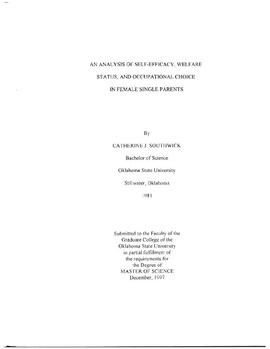| dc.description.abstract | The problem underlying the present study is that the number of female-headed households is already large and continues to increase each year. Many of these households are receiving public assistance. The current climate of public opinion is one of discontent with the welfare system. centered on the growth in caseload s, concerns about costs, and the perception that the system fosters long-term dependency among beneficiaries. A consensus exists among the public, practitioners, politicians, and welfare recipients themselves that the traditional AFDC program should be changed to place a greater emphasis on increasing self-sufficiency of the recipient. Congress and others argue that such self-sufficiency can be induced through legislation making benefits temporary, thus encouraging employment, and better serving the AFDC caseload (U.S. Department HEHS, 1994c). Programs are available that can help provide education and occupational training to assist in workforce entry, but these programs serve only a small percentage of the targeted audience. The problem 'is compounded by the fact that many of the women in the eligible population lack self-esteem and appear to be low in self-efficacy. As a result, most of those women that do elect to participate in training and education, choose traditional female occupations that pay lower wage scales, making it difficult for a single parent to support herself and her dependent children. | |
